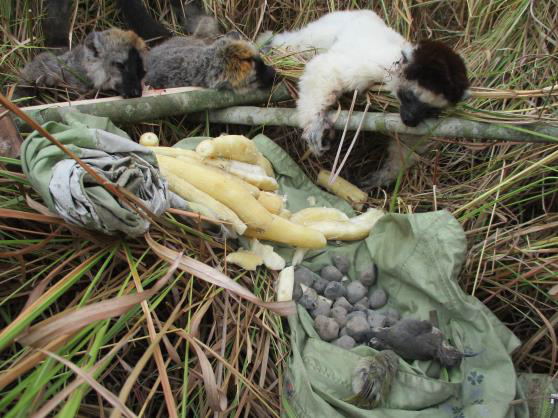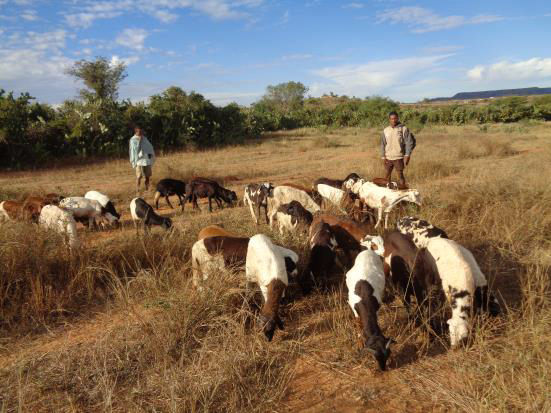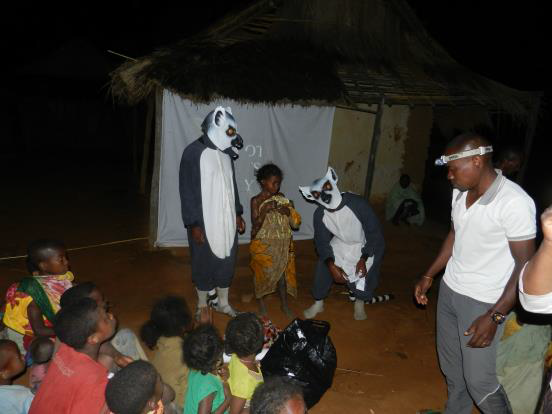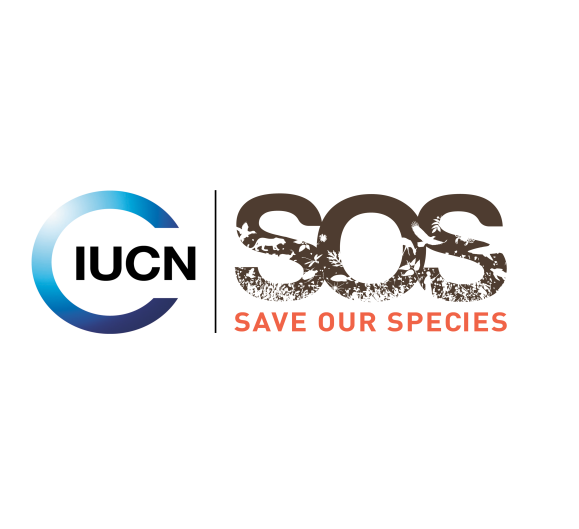Reducing lemur hunting in the Analavelona Sacred Forest, SW Madagascar
by Chris Birkinshaw – April 2020
Whisper it quietly, but Missouri Botanical Garden’s Madagascar Conservation Program is investing in lemur conservation. Currently the Program supports community-based conservation work at 11 Priority Areas for Plant Conservation in Madagascar. Unsurprisingly, in addition to their remarkable floras, all but one of these sites also supports important populations for threatened lemurs. Although primarily motivated by plant conservation, naturally, as responsible managers, we must also care for the animals inhabiting these sites.
One of the locations where we are especially investing in lemur conservation is at the Analavelona Forest, in south-western Madagascar. This 4487-hectare forest is a very rare example of sub-humid evergreen western forest (Photo 1). Sub-humid vegetation type exists here, in the sub-arid part of Madagascar, due to the forest’s location on a modest massif that has an orographic effect causing a significant but very localized increase in precipitation. Analavelona has a truly remarkable flora that includes several threatened and locally endemic species, but in addition, the forest provides habitat to an important albeit still poorly known fauna including seven lemur species. Four of these lemur species are classified as Endangered by the IUCN: the Ring-tailed Lemur (Lemur catta); Verreaux’s Sifaka (Propithecus verreauxi); Hubbard’s Sportive Lemur (Lepilemur hubbardorum); and the Pale Fork-marked Lemur (Phaner pallescens). In addition, the Red-fronted Brown Lemur (Eulemur rufifrons) is classified as Near Threatened.
Photo 1. The Analavelona Sacred Forest surrounded by vast areas of lush fire-prone grasslands
The lemurs are all threatened by habitat loss due to wild fires that are frequent in the grassland surrounding the forest and that sometimes, especially when stoked by brisk winds, penetrate into the forest. However, in addition, the large diurnal lemurs are threatened by hunting (Photo 2.). Although this activity is forbidden by Malagasy law, lemurs are sometimes hunted by the people who live in the landscape surrounding the forest threatening the long term survival of these animals in this isolated and relatively small forest.
Photo 2. Hunted Propithecus verreauxi and Eulemur rufifrons at Analavelona
In an endeavour to reduce the frequency of lemur hunting at this site we are implementing a two prong strategy. First, when local people help us install firebreaks around the forest we compensate them for their labour with sheep rather than cash, and implore them to raise the sheep and eat sheep meat rather than the meat of lemurs (Photo 3).
Photo 3. Some of 160 sheep being herded to a village close to Analavelona – compensation for work to make firebreaks and alternative to lemur meat
Second, we are organising lemur-themed events in the villages and hamlets surrounding the forest with the aim of transforming local paradigms concerning lemurs from being a source of meat to being an intriguing part of their natural heritage and a source of fascination and pride. These events were launched on World Lemur Day 2019 and will continue through 2020. They consist of the projection of films about lemurs, a question and answer session, and a quiz in which lemur-themed t-shirts and wrap-around clothes (lamboany) were provided as prizes for correct answers (Photo 4). The events were animated by our staff in remarkably convincing lemur outfits. To date, 1,080 residents including 487 adults and 593 children have participated in these events which have been organised in 8 villages. Further events will be organised in hitherto unvisited villages during May and June 2020, at which time, being the start of the dry season, we will also speak about the responsible use of fire to manage pasture land. We are now monitoring the frequency of lemur hunting at this site to elucidate whether or not these interventions have been effective. Our hope is that lemur hunting will become rare without negatively impacting the diet of those who previously relied on these animals as an occasional source of protein.
Photo 4. Lemur awareness-raising event
The activities described in this article are co-funded by the IUCN Save Our Species (see https://www.saveourspecies.org/). However, the opinions expressed our ours alone and do not necessarily reflect those of the IUCN.





